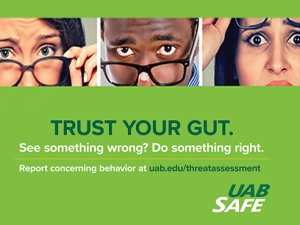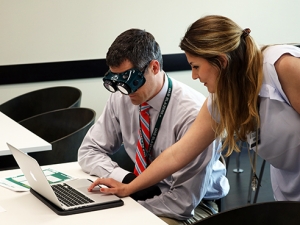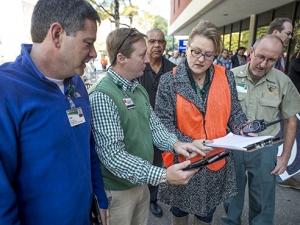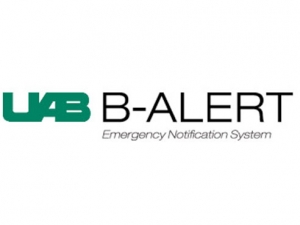 For more than a year, a group of faculty and staff has worked together behind the scenes to keep UAB safe from potential threats. The Behavioral Threat Assessment and Management team, comprising members from the university and UAB Health System, uses a structured process to proactively evaluate and manage behavioral threats to the safety and well-being of the campus community.
For more than a year, a group of faculty and staff has worked together behind the scenes to keep UAB safe from potential threats. The Behavioral Threat Assessment and Management team, comprising members from the university and UAB Health System, uses a structured process to proactively evaluate and manage behavioral threats to the safety and well-being of the campus community.
“BTAM is an enterprisewide resource,” said Jamie Erwin, associate director in University Risk Management and a member of BTAM. “We cover University Hospital, ambulatory clinics, campus and dormitories. Wherever UAB is, BTAM is there also.”
Twenty-eight reports have been made to BTAM since February 2016, Erwin said, and they have included everything from seemingly small occurrences, such as comments made in passing, to online threats and stalking.
Erwin said the BTAM team encourages employees to be on the lookout for any type of drastic emotional change; radical changes in behavior, academic or work performance, appearance; aggressive or irrational behavior; depression, unhappiness, a confrontational attitude or the ability to control anger; or any type of stalking. If an employee notices anything out of the ordinary with a student, co-worker or even within themselves, they are encouraged to contact a BTAM member or file an anonymous report.
|
“Wherever UAB is, BTAM is there also.” |
“Especially at UAB, it’s such a big place that people assume someone else will report something,” Erwin said. “In the U.S., workplace violence is one of the leading causes for on-the-job injuries. It may not involve them and they may not know the person [behaving strangely], but if they can report it and let us know about it, it could prevent harm or injury to someone that they do know.”
The team includes a diverse group of people, including representatives from UAB Police and the Department of Psychiatry. Erwin said. BTAM’s team members evaluate reported concerns first through their Triage Team, which reviews, analyzes and assesses the identified alarming or threatening behavior, often consulting with subject-matter experts, taking statements and reviewing UAB policies. If appropriate, the Triage Team will forward the assessment to the full BTAM team, who then develop a case-management strategy. Managers or supervisors then must implement all approved recommendations from the BTAM team or other UAB officials involved in the assessment of the situation.
“BTAM doesn’t operate in a silo,” Erwin said. “We operate across campus and share information. It’s a good way to tie all the resources from across campus together and tap into resources other entities might not be aware of. At its heart, BTAM is an information-sharing, problem-solving resource and communication tool.”

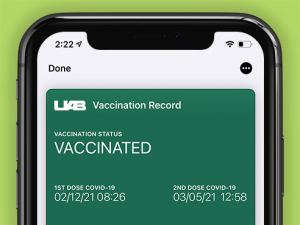
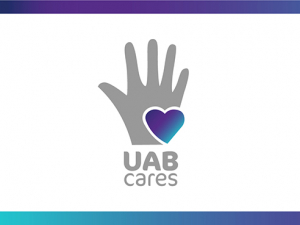

 Be safe, not a statistic: Pedestrian fatalities have risen 46 percent since 2009.
Be safe, not a statistic: Pedestrian fatalities have risen 46 percent since 2009.

